Language
The Chindamba language has a lexical similarity of 69% with Mbunga and 56% with Pogolo. Speakers also use Swahili. Although it has been reported that Ndamba and Mbunga are two different tribes, the reality is that they are one tribe and the difference between them is purely dialectic. All three are Rufiji–Ruvuma languages of the Bantu family.
In recent years some Ndambas have volunteered to write a dictionary on Chindamba. The first standard Ndamba dictionary was published in 2008 and 2010 by Agathon Kipandula, a language researcher who was an employee of the Bank of Tanzania. Some Ndambas have also written Historia na Maisha ya Wandamba that was published in 2022. Those writers include: Reverand Fidelis Mfalanyombo (OSA), Agathon Kipandula, John Eusebius Chilipweli, Asernius Hamis Ndege and Leoni Alois Mbala
Linguistic texts include the 2010 Rüdiger Köppe Verlag publication Edelsten, Peter; Lijongwa, Chiku (2010). A Grammatical Sketch of Chindamba - A Bantu Language (G52) of Tanzania. ISBN 978-3-89645-706-6.
Origin
Oral tradition states that the Ndamba people were originally an offshoot of the Pogoro people. Their first chief was Mbuyi Undole I, who led a small group westward away from the Pogoro. It was Mbuyi Undole I who registered the Ndamba as a tribe with the German government in 1901. The Ndamba flourished and spread through the southern part of the Morogoro Region. The tribe is now found in Mlimba, Masagati, Chisano, Chita, Merera, Malinyi, Igawa, Biro, Ngombo, Mchombe, Mngeta, Lwipa, Mbingu, Mofu, and other parts of Kilombero District and Ulanga District areas.

The Bantu languages are a language family of about 600 languages that are spoken by the Bantu peoples of Central, Southern, Eastern and Southeast Africa. They form the largest branch of the Southern Bantoid languages.
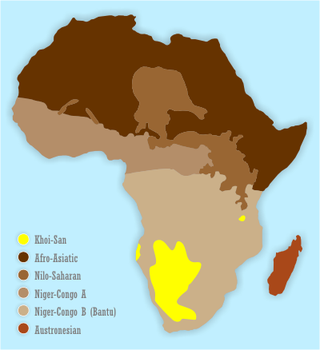
The Khoisan languages are a number of African languages once classified together, originally by Joseph Greenberg. Khoisan is defined as those languages that have click consonants and do not belong to other African language families. For much of the 20th century, they were thought to be genealogically related to each other, but this is no longer accepted. They are now held to comprise three distinct language families and two language isolates.

Swahili, also known by its local name Kiswahili, is a Bantu language spoken by the Swahili people, who are found primarily in Tanzania, Kenya and Mozambique.
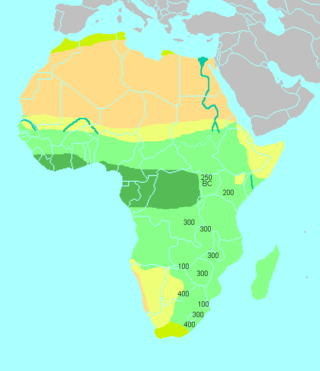
The Bantu expansion is a hypothesis about the history of the major series of migrations of the original Proto-Bantu-speaking group, which spread from an original nucleus around Central Africa across much of sub-Saharan Africa. In the process, the Proto-Bantu-speaking settlers displaced, eliminated or absorbed pre-existing hunter-gatherer and pastoralist groups that they encountered.
The Akie are a Tanzanian ethnic and linguistic people living in south western Simanjiro District of Manyara Region. In 2000 the Akie population was counted at 5,268. The Akie, like other hunter-gatherer peoples in Kenya and Tanzania, are sometimes called by the derogatory and misleading term Dorobo or Wandorobo. The Akie were featured by Bruce Parry in the BBC series "Tribe". They live around 150 miles south east of Olduvai Gorge
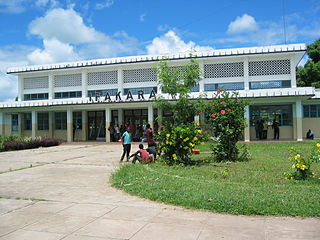
Ifakara is a town in the Kilombero District, Morogoro Region, south central Tanzania. It is the headquarters of the Kilombero District administration and the main trading centre for Kilombero and Ulanga districts. The town is located near the Tanzania-Zambia Railway (TAZARA) line, at the edge of the Kilombero Valley, a vast swampland flooded by the mighty Kilombero River.
The Segeju are a Bantu ethnolinguistic group mostly based in Tanzania's Tanga Region and Kenya's Kwale County. Most Segeju reside in the small coastal strip between the Tanzanian city of Tanga and the Kenyan-Tanzanian border. However, some Segeju have migrated to urban areas in other parts of Tanzania or Kenya, in hopes of better employment opportunities and quality of life. Segeju migration to urban areas often results in severance of community ties, leading to a lack of transmission of important cultural traditions and language.

The Mwera people are a Bantu ethnic and linguistic group. They are native to Kilwa District in southeast Lindi Region. However they have also settled in northern Mtwara Region, and eastern Ruvuma Region of Tanzania, as well as along the Ruvuma River between Tanzania and Mozambique.
The Mbunga are an ethnic and linguistic Bantu group from Kilolo District of Iringa Region and Morogoro Region in Tanzania. In 1987 the Mbunga population was estimated to number 29,000.
The Matumbi are a Bantu ethnolinguistic group native to Kilwa District, Lindi Region in southern Tanzania, who speak the Matumbi language. They are also the native inhabitants of the Songosongo island archipelago. Their homeland is also south of the Rufiji delta in southern Pwani Region in Rufiji District. In 1978 the Matumbi population was estimated to number 72,000. They are the largest ethnic group in Kilwa District. The Matumbi Highlands are named after them.

The Kuria people (also known as the AbaKurya, are a Bantu community in Tarime District of Mara Region in Tanzania and southern Kenya. Their homeland is bounded on the east by the Migori River and on the west by the Mara River estuary. Traditionally a pastoral and farming community, the Kuria grow maize, beans and cassava as food crops and coffee and maize as cash crops.

The Ha, also called Abaha, are a Bantu ethnic group found in Kigoma Region in northwestern Tanzania bordering Lake Tanganyika. In 2001, the Ha population was estimated to number between 1 and 1.5 million, making them one of the largest ethnic groups in ethnically diverse Tanzania.

The Iraqw People are the Cushitic-speaking ethnic group inhabiting the northern Tanzanian regions. They are an abundant significant group in originating in southwestern Arusha and Manyara regions of Tanzania, near the Rift Valley. The Iraqw people settled in the southeast of Ngorongoro Crater in northern Karatu District, Arusha Region, where they remain the majority ethnic group. In Manyara region, the Iraqw are a major ethnic group in Mbulu District, Babati District and Hanang District.
The Ikoma are an ethnic and linguistic group based in Mara Region in northern Tanzania.
The Somali Bantus are a Bantu ethnic minority group in Somalia who primarily reside in the southern part of the country, primarily near the Jubba and Shabelle rivers. The Somali Bantus are descendants of enslaved peoples from various Bantu ethnic groups from Southeast Africa, particularly from Mozambique, Malawi, and Tanzania. The East African slave trade was not eliminated until the early parts of the 20th century.
Zaramo is a Niger-Congo language, formerly primary language of the Zaramo people of eastern Tanzania. Zaramo is also known as Zalamo, Kizaramo, Dzalamo, Zaramu, Saramo and, Myagatwa. The language is critically endangered. The ethnic population of the Zaramo people reaches about 200,000, yet there are only a few elderly speakers remaining.
Ndamba or "Chindamba" is classified as a Bantu language. It is one of 87 languages spoken in Tanzania Most Chindamba speakers are bilingual in Swahili and Chindamba.
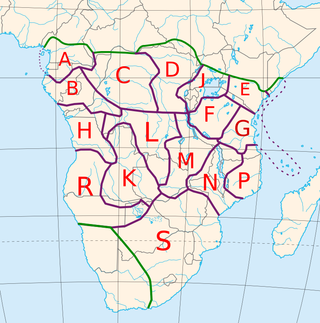
The Bantu peoples are an ethnolinguistic grouping of approximately 400 distinct native African ethnic groups who speak Bantu languages. The languages are native to 24 countries spread over a vast area from Central Africa to Southeast Africa and into Southern Africa. There are several hundred Bantu languages. Depending on the definition of "language" or "dialect", it is estimated that there are between 440 and 680 distinct languages. The total number of speakers is in the hundreds of millions, ranging at roughly 350 million in the mid-2010s. About 60 million speakers (2015), divided into some 200 ethnic or tribal groups, are found in the Democratic Republic of the Congo alone.
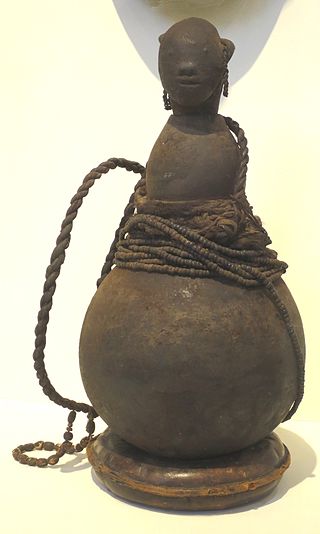
The Mbugu people, also known as the Va'maa, Ma'a are an ethnic Bantu and linguistic group hailing from western Usambara Mountains of Lushoto District in Tanga Region of Tanzania. Tanzania's Mbugu language is one of the few true hybrid languages, combining Bantu grammar with Cushitic lexicon. In actuality, the people speak two languages: one mixed and the other Pare, which is closely linked to the Bantu language. They are estimated to be around 60,000 Mbugu people left.










